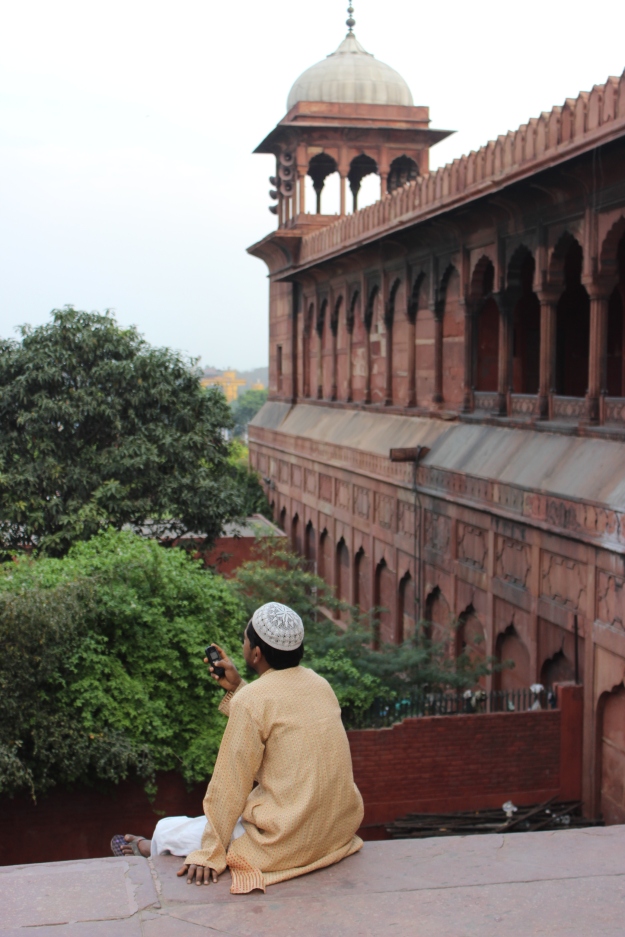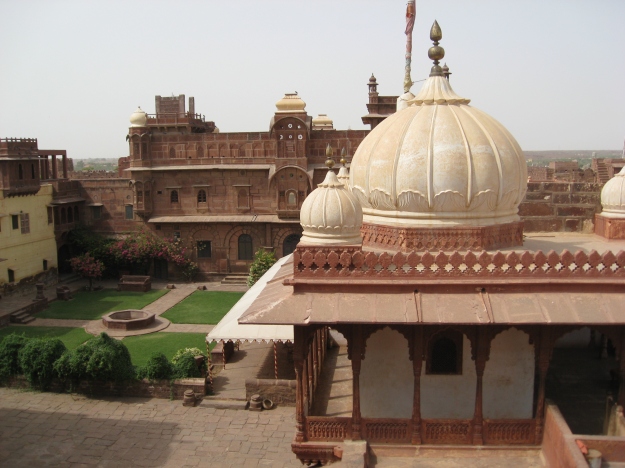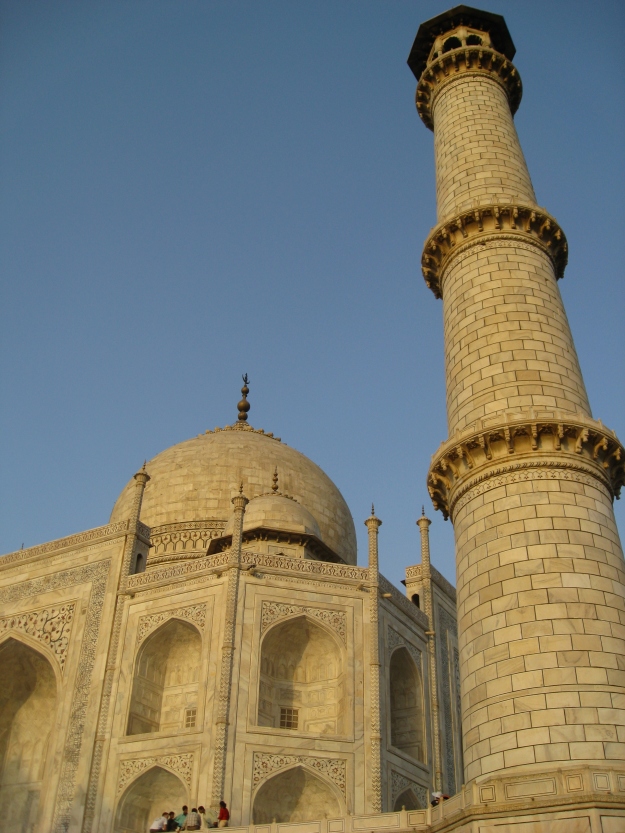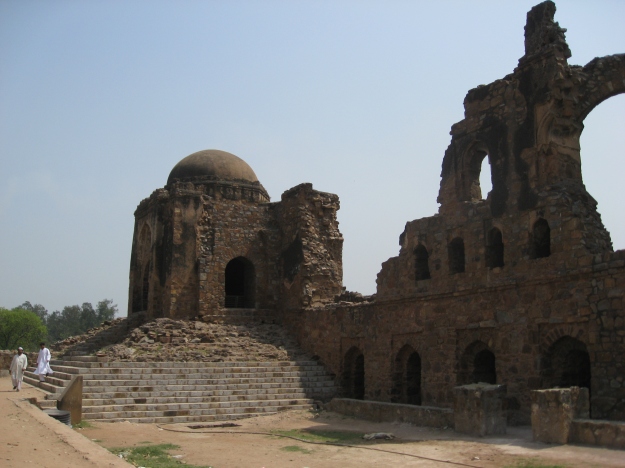Our recent Southeast Asia trip begun in Kuala Lumpur and I wrote 48 hours in Kuala Lumpur about the time we spent in this exciting city. As often in life, it is important that the circle comes to an end, so here you go with “24 hours in Kuala Lumpur”, describing the last day of our trip before returning to Paris.
First of all, I have to say that I was so impressed with Malaysia in general. We had very few expectations and KL to us was supposed to be “just a hub”, but it totally charmed us. Now we are joking about retirement in Penang (if we don’t retire in our beloved India!). Malaysians, in my humble opinion, are very kind, educated and excellent in communication. There is something sort of “American” in them in a way that they have a very developed sense of service, they master the small talk and they like interacting with other people. (FYI: Malaysia’s tourism organization is not paying me for saying this, but should you read this and would like me to become your Ambassador, I am ready to become one!)
To prove my impressions right, I am proud to say that I have a new friend in KL and his name is Jamil Kucing. He has an animal shelter and he is well-known among locals. You can read the entire story in 48 hours in Kuala Lumpur and to find more about Jamil the Catman see his blog: http://jamilthecatman.blogspot.com. We have exchanged emails since my return to Paris, agreeing to meet up the next time I am in KL. Jamil offered to lend me his spare scooter so that we can cruise around KL with monkeys in our back seats! How cool is that….
During this trip, we only visited KL and Langkawi, but I got an impression it was very clean everywhere. The food was diversified, representing the rich history of Malaysia, and delicious. What comes to architecture, I felt that the construction projects were realized in harmony with the nature. In fact what I saw in Malaysia reminded me of Costa Rica where I worked during five months: in Langkawi almost all tourism activities were related to either nature or animals and in Kuala Lumpur the city looked green and I could see and smell the nature. The photo below was taken from our hotel room. Notice how lush it is!

HOTEL: During our first stay in Kuala Lumpur we stayed at Capitol Hotel (http://www.hotelcapitol-kualalumpur.com/). This time, as our Air Asia flight from Langkawi landed in quite late, we decided to stay closer to Sentral and reserved  at Le Meridien (http://www.lemeridienkualalumpur.com/). Le Meridien is very conveniently located right next to Sentral which is KL’s transportation hub (that in the end we did not use). We were given an upgrade upon arrival, went straight to sleep and started the next day with a coffee by the lovely pool. We paid MYR 220 (72USD) at Hotel Capitol and MYR 348 (114USD) at Le Meridien. I agree that Le Meridien is very conveniently located for short visits and business trips, but for tourism reasons I think I prefer the location of Hotel Capitol. Both have a swimming pool and certainly Le Meridien pool is better,
at Le Meridien (http://www.lemeridienkualalumpur.com/). Le Meridien is very conveniently located right next to Sentral which is KL’s transportation hub (that in the end we did not use). We were given an upgrade upon arrival, went straight to sleep and started the next day with a coffee by the lovely pool. We paid MYR 220 (72USD) at Hotel Capitol and MYR 348 (114USD) at Le Meridien. I agree that Le Meridien is very conveniently located for short visits and business trips, but for tourism reasons I think I prefer the location of Hotel Capitol. Both have a swimming pool and certainly Le Meridien pool is better,  but the pool Hotel Capitol offers is not bad either (it is located at a nearby hotel and access is free). Worth mentioning is that you probably find food at any hour near Capitol Hotel but near Le Meridien, at best, you may just have McDonalds at Sentral. Well, I am happy I tried both hotels as it allowed me to see different parts of KL.
but the pool Hotel Capitol offers is not bad either (it is located at a nearby hotel and access is free). Worth mentioning is that you probably find food at any hour near Capitol Hotel but near Le Meridien, at best, you may just have McDonalds at Sentral. Well, I am happy I tried both hotels as it allowed me to see different parts of KL.
SIGHTS NEAR LE MERIDIEN HOTEL: After the pool session we started sightseeing. It was not yet too hot so we walked toward Jalan Tun Sambanthan (a major road near the hotel, see the photo above). The area is called Brickfields and it is a home to many Tamils from India and Sri Lankans. Indian music was loud, spices in the air,
started sightseeing. It was not yet too hot so we walked toward Jalan Tun Sambanthan (a major road near the hotel, see the photo above). The area is called Brickfields and it is a home to many Tamils from India and Sri Lankans. Indian music was loud, spices in the air,  and this quick change in atmosphere was fascinating!
and this quick change in atmosphere was fascinating!
We got slightly lost but finally reached Thean Hou Temple, named after the Heavenly Mother. It is a modern-times temple, built in the 1980’s and open since 1989. It is dedicated to Buddhism and worth the climb. Architecturally it is a mixture of different styles: Buddhism, Taoism and Confucianism. At the time of our visit there was a wedding of a lovely couple and we wished them well in their new life. I thought the bride was very stylish! 

ISLAMIC ARTS MUSEUM MALAYSIA: Another reason why we chose Le Meridien was that it has a relatively easy access to Islamic Arts Museum (http://www.iamm.org.my/). From the temple we took a taxi to this museum (it was getting too hot to walk!). The building is very new (1998), spacious and spotles sly clean. We had a quick snack at the Museum Restaurant before starting the exploration. I could go on and on about how fantastic this museum is, but let me begin by saying that it should be on everyone’s What To Do in Kuala Lumpur -list. Objects are beautiful (I adored the miniature Korans!!) and the display is very clear and welcoming. It is a very
sly clean. We had a quick snack at the Museum Restaurant before starting the exploration. I could go on and on about how fantastic this museum is, but let me begin by saying that it should be on everyone’s What To Do in Kuala Lumpur -list. Objects are beautiful (I adored the miniature Korans!!) and the display is very clear and welcoming. It is a very  educative museum and there are many excellent well-done and clear maps, like the one about the Islamic architecture in the world, with a special focus in the Malay Archipelago (see the photo).
educative museum and there are many excellent well-done and clear maps, like the one about the Islamic architecture in the world, with a special focus in the Malay Archipelago (see the photo).
I will definitely go back the next time when I am in KL because there is so much to learn about the Islamic influence, architecture, art, calligraphy, Koran, etc. Geographically the museum focuses equally in each region of the world, and for example after having done some extensive traveling in India, I found it useful to see maps and chronological explanations about the great Mughal Empire in India (1526-1858). Please go and see this museum: it is fascinating!!
DINNER: After some  retail therapy it was time to eat dinner. We were really eager to re-taste seafood that we had had during our previous stay, so we returned to our usual Sai Woo Restaurant, located at 55 Jalan Alor in Bukit Bintang. The street is full of restaurants that offer different local specialties and most restaurants have menus that come with pictures to help those unfamiliar with the variety of food Malaysia offers.
retail therapy it was time to eat dinner. We were really eager to re-taste seafood that we had had during our previous stay, so we returned to our usual Sai Woo Restaurant, located at 55 Jalan Alor in Bukit Bintang. The street is full of restaurants that offer different local specialties and most restaurants have menus that come with pictures to help those unfamiliar with the variety of food Malaysia offers. 
We ordered far too much food, but as it was our last dinner in Asia, we were anticipating the return to Europe…. Double Variety Kai Lan, Lotus Roots with Macadamia Nuts, Spicy “Kam Heong” Bamboo Shell, and many more dishes with names I cannot remember including duck, chicken satay and razor shells…. (I am getting hungry as writing this!). We did not ask, but I wonder if we could have taken a doggy bag to the airport…?
After the dinner we returned for a foot massage in a place around the corner from the restaurant (see 48 hours in Kuala Lumpur), had a quick shower at the hotel and caught a taxi to the airport to catch an Emirates A380 back to Paris.
Malaysia Truly Asia (http://www.tourism.gov.my/), you chose an appropriate slogan and I will be back very soon inch’allah!










































